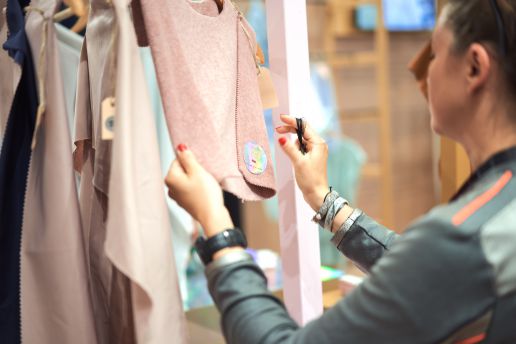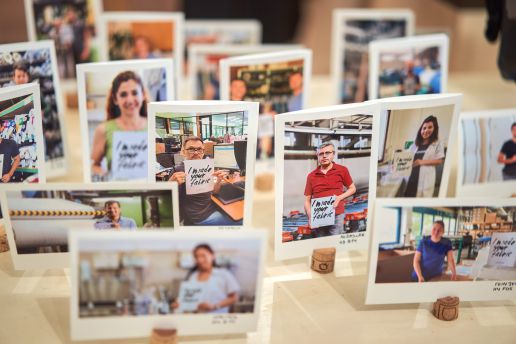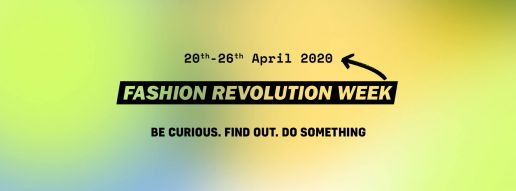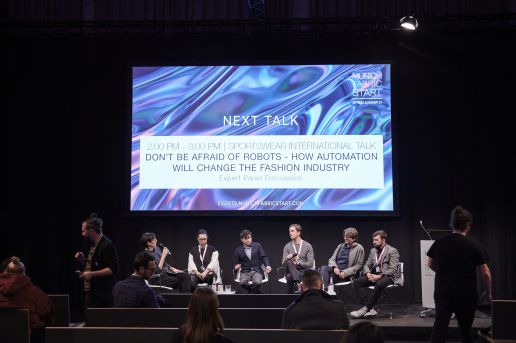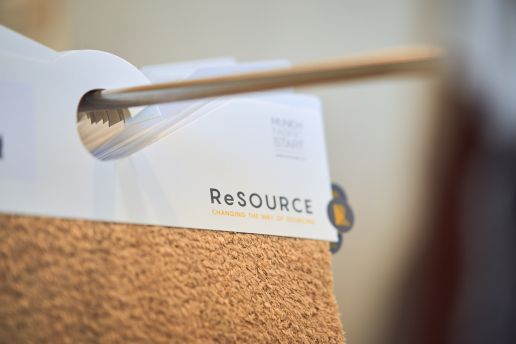Supply Chain
Fashion Revolution at Munich Fabric Start
Since Fashion Revolution started, consumers, activists, brands and businesses have used their voices to demand change from the fashion industry to ensure fashion is made in a safe, clean and fair way. In our position as an industry platform we are able to convey the significance of this movement to our community of fashion professionals but also to our global network of manufacturers and suppliers operating in the textile and fashion industry.
At previous editions of our shows we reached out to our exhibitors to get involved in the viral movement #WHOMADEMYCLOTHES and send us photographs of their team responding to the question ‘Who Made My Fabrics, Trims, Prints and Denim?’. Displaying these in our busy trend and entrance areas helps send a powerful message to our audience and communities that these businesses are prepared and willing to support this Fashion Revolution movement leading to greater transparency and traceability throughout the supply chain, from fiber all the way to the end consumer.
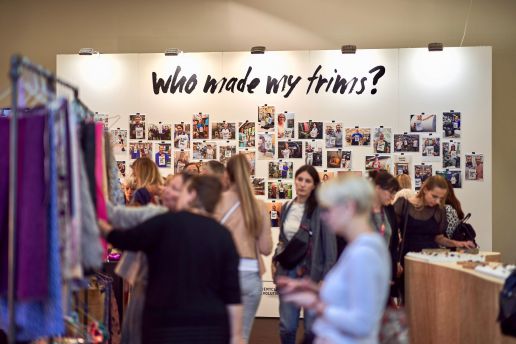
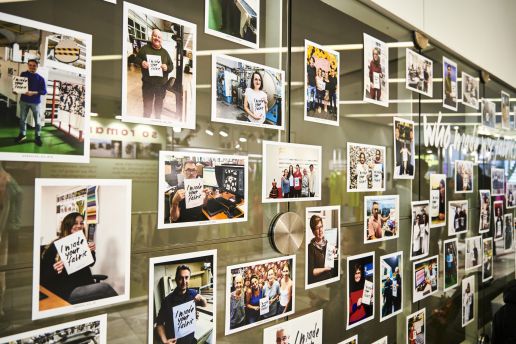
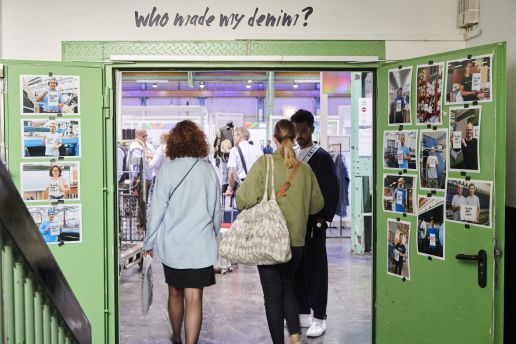
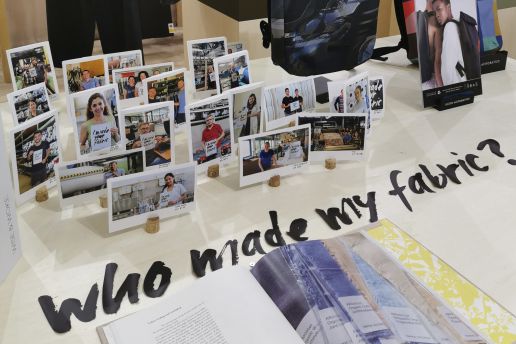
Sustainability in the textile and fashion industry is hugely multifaceted therefore the aim at our events is not only to provide a platform to promote new sustainable technology, material and fibre innovation but also to provide the necessary resources and educational tools to encourage and support the growth of sustainable processes and practices. Find out how we are creating future with KEYHOUSE, our hub for innovation at Munich Fabric Start.
The response at our shows has been overwhelmingly positive and exhibitor involvement has been a great success which we hope will continue to grow season after season. Once again, #WHOMADEMYCLOTHES will be featured in the trend areas and entrance ways at the upcoming MUNICH FABRIC START and BLUEZONE shows in September 2020. Read the latest news on our event planning during these times of Covid-19, here.
FASHION REVOLUTION WEEK
Fashion Revolution Week 2020 will shine a light on the steps needed to bring about revolutionary change at this pivotal point in the history of the fashion industry. Now, more than ever before, the industry is coming under increasing scrutiny and millions of people around the world are expected to participate in Fashion Revolution Week as it moves online. Find out how you can get involved now.
How Automation Will Change The Fashion Industry
SPORTSWEAR INTERNATIONAL TALK
DON’T BE AFRAID OF ROBOTS – HOW AUTOMATION WILL CHANGE THE FASHION INDUSTRY
In the February edition of Keyhouse at MUNICH FABRIC START, Sabine Kühnl, Editor-in-Chief at Sportswear International, hosted a panel about “Don’t be afraid of robots! How automation will change the fashion industry”. Five leading experts offered their unique insights into automation, digitalization and localization – which are currently some of the key trends driving the global fashion market.
With Ebru Ozaydin (Artistic Milliners), Jon Zornow (founder of Sewbo), Dr David Schmelzeisen (Research Associate of ITA, RWTH Aachen), Dr. Thomas Fischer (Head of Research at ITF Denkendorf) and Benjamin Baumann (Project Manager at Kuka).
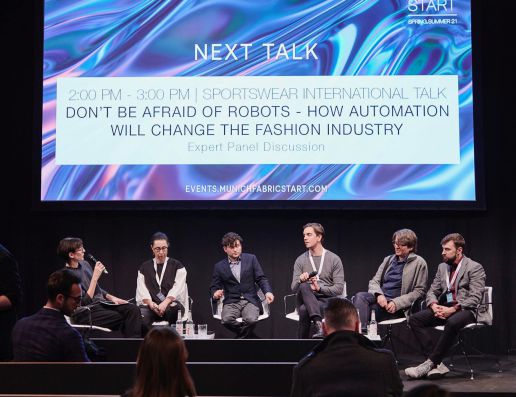
Don’t be afraid of robots! How automation will change the fashion industry
As we move closer towards a fashion system which resembles Industry 4.0, the five experts offered their insights into our current status and the role of automation, digitalization and localization.
Are we operating in times of Industry 4.0?
In terms of the classic, mass production of our fashion systems, our panellists agreed we are not fully digitized yet. Where Industry 4.0 is concerned, it has a lot to do with digitization and digital product development and simply the necessary steps have not been integrated throughout all areas of the production chain. Fischer estimates the progress among the various fragments of the fashion industry only reaches a maximum of 50%, with Baumann also suggesting that if we break down the many subtopics, we are making greater progress in some areas than others.
What then is the greatest challenge facing our industry?
Industry 4.0 relies on the exchange and sharing of data, which is currently still a problem for our fashion industry which is greatly fragmented. Where progress is often stunted due to manufacturers working conservatively instead of as part of a community which makes sharing and accessing data difficult. Collecting and processing data at all stages plays a vital role for Ozaydin, in order to bring more information about the production into the hands of the end consumer. With greater investment in automation technology, linking systems together in this way Zornow elaborates will make data sharing infinitely more efficient and available.
Is there a role textiles can play as part of Industry 4.0?
Textiles can be distinguished as part of the network where clothes can play an essential role in communication with its environment and the wearer. Through various integrated CPS’s (Cyber Physical Systems) such as sensors and antennas, textiles can become extremely useful materials for Industry 4.0 as well as a lot of other sectors. We explored this topic in greater detail with The Nurture Room project by fashion technology expert Pauline van Dongen also at the Keyhouse.
Will there always be a place for humans in fashion and textile manufacturing?
Through greater collaborative efforts and research into digitization, it will be possible to drive down the initial costs of automation which would lead to increased investments into automating processes. However, these will be non-value adding tasks and currently cannot replace the labour-intensive processes carried out by human beings. Schmelzeisen typically advises that 40% of production should be digitised but views the future of robots in the fashion industry as a collaborative relationship, where robots are brought in to assist workers and provide relief in difficult or strenuous tasks. Repetitive or mundane processes can be out sourced while increasing focus on value adding tasks only achieved by humans. There will be more jobs which evolve are suited to the human nature, their creativity and craftsmanship also in the development and management of these processes.
What is the role of localization in this new fashion system?
With global trends indicating that labour costs are set to increase in the conventionally ‘cheaper’ countries, this could make the higher investment costs of automation technology more feasible. At the same time, from a sustainability point of view, there will be an increase in companies operating regionally where materials can be processed and recycled locally. With solutions such as nearshoring, micro factories and smaller production centres offering attractive alternatives in times of political and environmental uncertainty. Also offering a solution to the high demand for personalisation and bespoke design services at the point of manufacturing, leading to the invention of new, customised technology and automated processes scaled to these new production processes. “Everything that can be digitized will be and everything that can be digitized can be personalised.” – Dr Thomas Fischer
Want to know more? Watch the full discussion now available on our YouTube channel.
Sustainable Standards Guaranteed at ReSOURCE
With increasing importance placed on sustainability, the need to guarantee truly sustainable standards is in greater demand by buyers and brands. Ahead of their showcase at ReSOURCE at the next edition of MUNICH FABRIC START, we interviewed representatives Heike Hess of the International Association of Natural Textiles (IVN) and Franziska Dormann of Global Organic Textile Standard (GOTS).
Briefly, IVN awards two quality seals for ecologically produced products: NATURTEXTIL and NATURLEDER. For both seals, the association has defined parameters that have become a standard in the industry. The association is co-owner of GOTS, the worldwide standard for the production of sustainable textiles on an industrial scale.

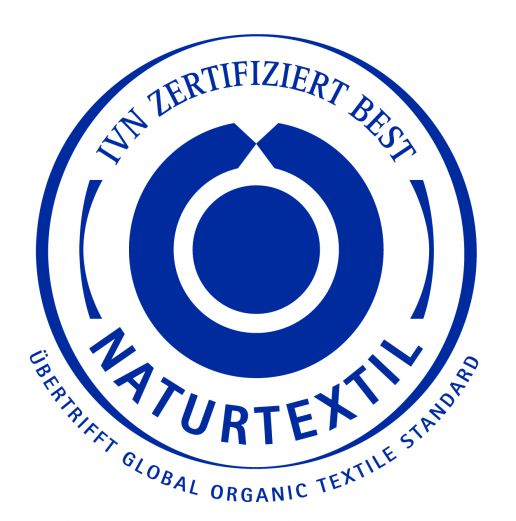
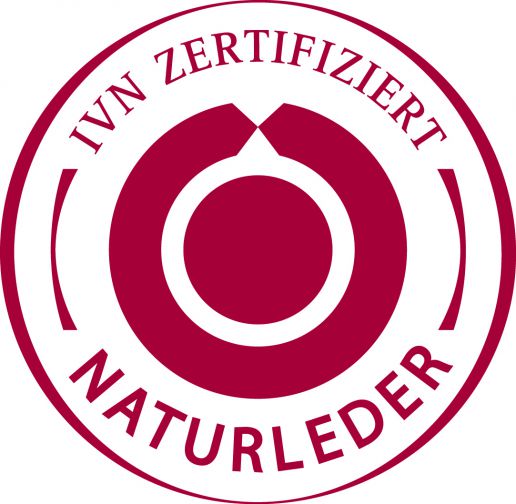
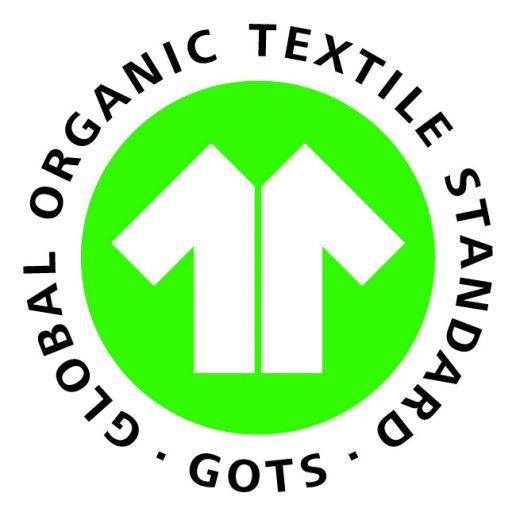
What is the most frequently asked question at the beginning of a consultation?
GOTS: Often it begins with a general introduction to the Global Organic Textile Standard, i.e. What is covered by the standard? How is this ensured? By reviewing the strict social and environmental criteria throughout the entire textile supply chain – from the fields to the wardrobe – GOTS guarantees safety and transparency for the consumer. The independent certification ensures credibility compared to mere self-explanatory statements.
IVN: Most visitors ask us for certifications and seals. How to get certified, which fabrics and accessories must be sourced to reach IVN BEST or GOTS requirements or how do our seals differ from others founds in ReSOURCE, register here.
What changes do you want brands to make in the next 5 – 10 years to bring about and anchor sustainable aspects of the textile industry?
GOTS: I think most people have recognized the importance and urgency of this because no one can fly under the radar for long. Sustainability interests those who have to justify themselves the most. For us, these are the brands that sell. Everyone involved is interested, the question is which actions follow? In industry, the spectrum ranges from greenwashing to genuinely practiced sustainability. Consumers range from lip service to showing a real willingness to spend more on sustainable products.
IVN: Many buyers, especially brands, are looking for certified fabrics. The selection of certified fabrics made with natural fibres in ReSOURCE is quite large, but for synthetic and regenerated fibres there is a lack of products that have been awarded truly sustainable seals. I would like to see more interest from the brands here, which would result in a stronger commitment on the part of the fabric suppliers.


How has the brands’ approach to research and purchasing changed over the last seasons?
GOTS: The trade fairs, as well as specific enquiries by e-mail, have resulted in more and more brands wanting to find out which suppliers are already GOTS-certified. Here I refer to the public database with almost 6,000 certified companies. Many companies that are interested in GOTS want to continue working with their existing suppliers and therefore jointly go the way of gaining certification of their entire supply chain.
IVN: You can clearly see that the topic of sustainability is becoming increasingly important for brands. Visitors at ReSOURCE are better prepared and ask more concrete questions. Many are looking for specific products and have clear expectations about what a fabric should be like. The typical length of time brands exhibit in the ReSOURCE area has definitely increased. More and more buyers who do not explicitly belong to sustainable companies are also showing interest in the products exhibited at ReSOURCE.
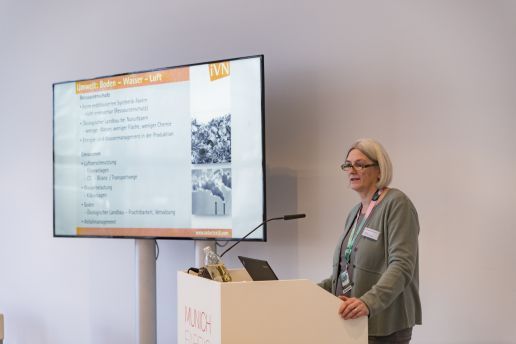
What are the specific challenges facing a future-oriented fashion industry?
IVN: The challenges vary depending on the size and orientation of the fashion companies. Smaller brands – especially in the sustainable segment – have problems finding certified suppliers who also supply small quantities. Larger companies use many different materials and accordingly many different suppliers. It is difficult to have an overview of the entire supply chain up to your own company, especially if you attach importance to a certain level of sustainability held by suppliers and sub-suppliers. It is still a challenge to reconcile certification and sustainability with the profitability of products. For particularly fashionable brands, it is still challenging to find exclusive or unique fabrics and additionals in sustainable qualities. There are certainly some other challenges, but overall it is more important that today means making sustainable fashion easier and more profitable than it was a few seasons ago.



New Icon Guidance System to increase Transparency
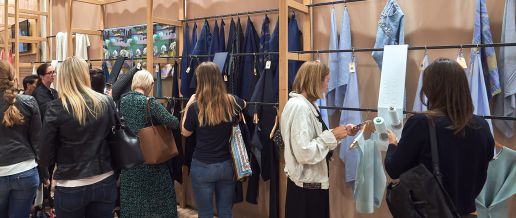
Answering to the theme of innovation driven by THRIVABILITY, MUNICH FABRIC START has developed a new icon guidance system with which all material highlights presented in the trend forums are marked according to their sustainable as well as technical functions. In this way, trade fair visitors can quickly and clearly see what additional product features and functions the shown fabrics and ingredients have.
Each of the 44 icons indicates a specific characteristic related to the sustainability or performance of the respective product. With the help of these icons, manufacturers can highlight the added value of their products and at the same time make it easier for interested buyers to navigate through the increasingly vast range of products on offer.
“With our new icon guidance system, we are highlighting the interface between contemporary aesthetics and invisible but important advanced product features. In doing so, we see MUNICH FABRIC START neither as a certification body nor an audit agency – for the given classification, we rely on the information and honesty of the respective supplier of the corresponding samples. We are thus taking an important step towards information, transparency and responsible action in the interest of the industry.
Jo Baumgartner, Fabrics & Trends MUNICH FABRIC START
In this sense, all specific properties such as eco-labels, social standards, performance indicators, limit values, chemical ingredients, etc. must be verified again with the respective provider. In the trend forums at MUNICH FABRIC START, you will find the icon legend with the corresponding explanations and meanings behind all of the icons.
